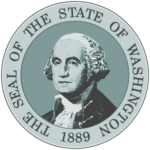The following standards are used by in-service educators to align their professional growth plans (PGP) for certificate renewal, and by clock hour providers to align their clock hour offerings.
- Cultural competency, diversity, equity, and inclusion (CCDEI) standards
- Or, Social Emotional Learning (SEL) standards, benchmarks, and indicators
- Or, the professional educator role standards as follows:
Teachers
-
- Teachers: National Board for Professional Teaching Standards (NBPTS) standards, including the Five Core Propositions.
- CTE teachers: Standards under 181-77a-165 and as published by PESB (document).
Administrators
-
- Principals, program administrators, superintendents: National policy board for educational administration (NPBEA) Professional standards for educational leaders (PSEL)
- CTE directors: Standards (document) published by PESB.
Paraeducators
-
- Paraeducator standards of practice (document)
Educational staff associates
-
- School behavior analyst: Behavior Analyst Certification Board (BACB) Board Certified Behavior Analyst (BCBA) task list.
- School counselor: American School Counseling Association (ASCA) professional standards and competencies; or School counseling standards (PDF) published by the National Board for Professional Teaching Standards (NBPTS).
- Many school counselors will want to align their PGPs to the ASCA standards, but those pursuing National Board certification or maintenance of certification may wish to choose the NBPTS standards.
- School nurse: American Nurses Association (ANA) and National Association of School Nurses (NASN) School Nursing: Scope and Standards of Practice.
- School occupational therapist: American Occupational Therapy Association (AOTA) Standards for continuing competence.
- School orientation and mobility specialist: Academy for Certification of Vision Rehabilitation & Education Professionals (ACVREP) Certified orientation and mobility specialist (COMS) scope of practice, body of knowledge, and competencies; Or, National Blindness Professional Certification Board (NBPCB) National Orientation and Mobility Certification (NOMC), including structured discovery methods and principles.
- School physical therapist: Academy of pediatric physical therapy: updated competencies for physical therapists working in schools (PDF), including competency and related statements, and related clinical skills.
- School psychologist: National Association of School Psychologists (NASP) professional practices.
- School social worker: National Association of Social Workers (NASW) Standards for School Social Work Services
- School speech language pathologist or audiologist: American Speech Language Hearing Association (ASHA) standards for clinical competence in speech language pathology: knowledge and skills outcomes; Or, American Speech Language Hearing Association (ASHA) standards for clinical competence in audiology: knowledge and skills outcomes.
